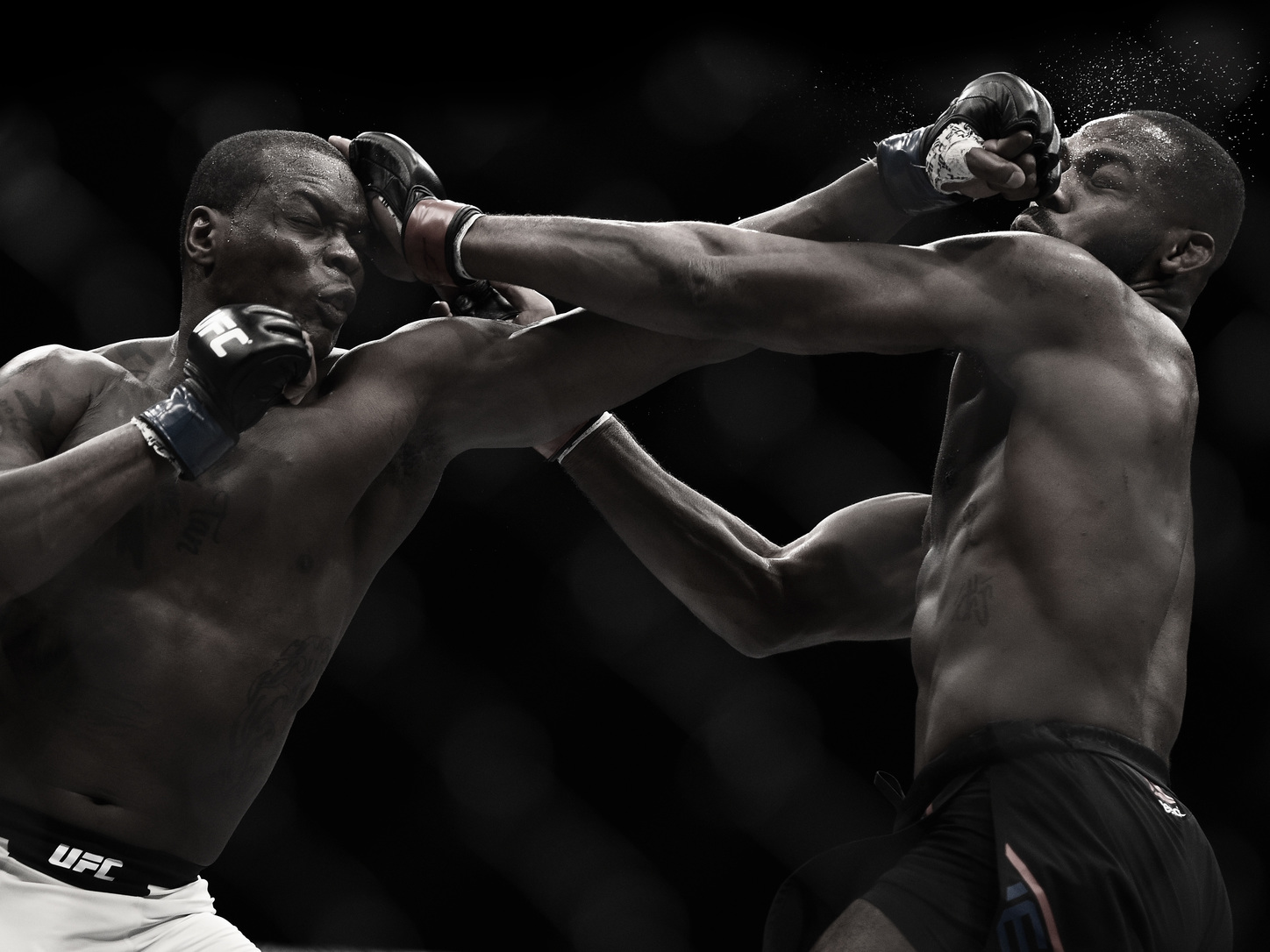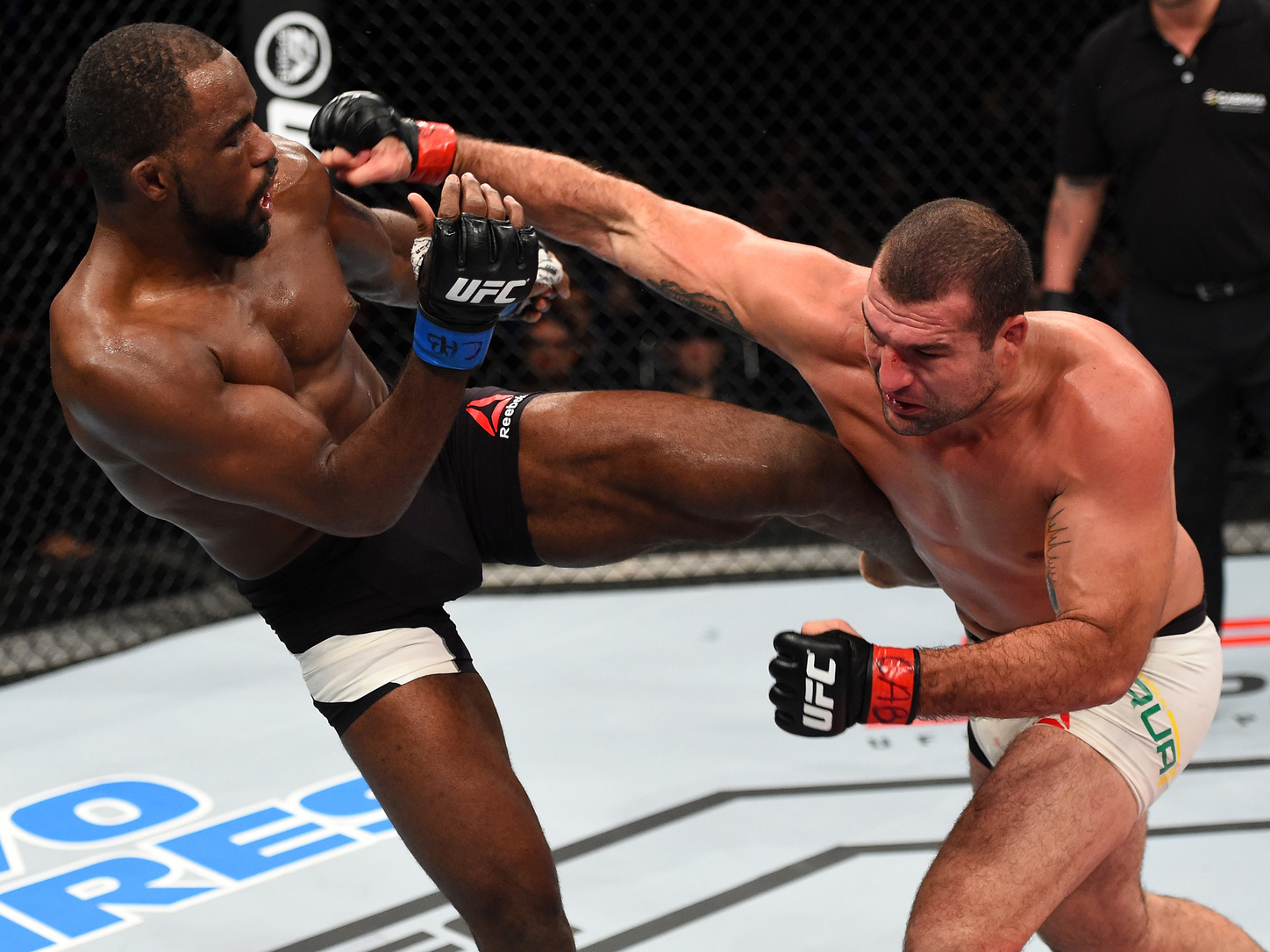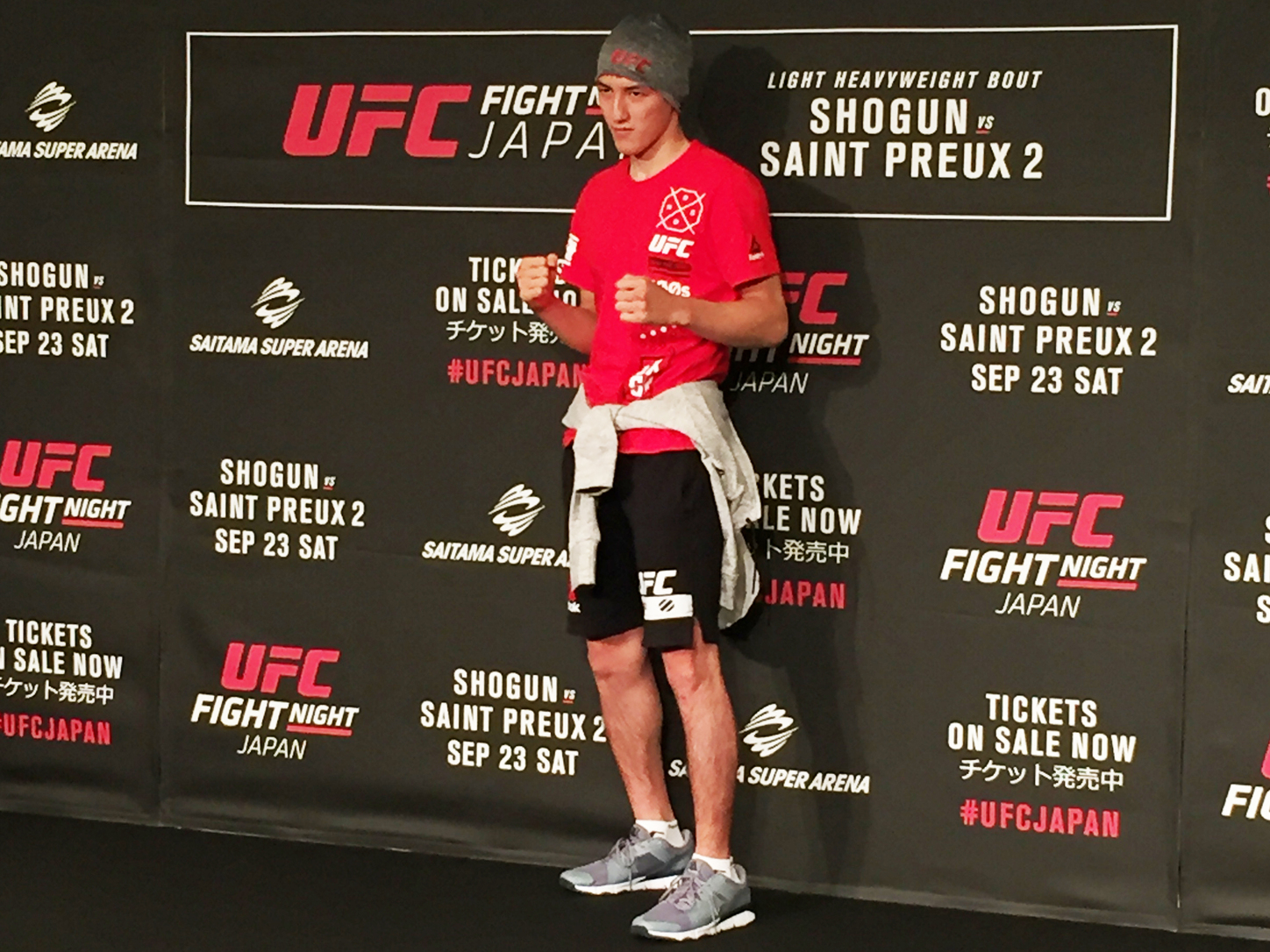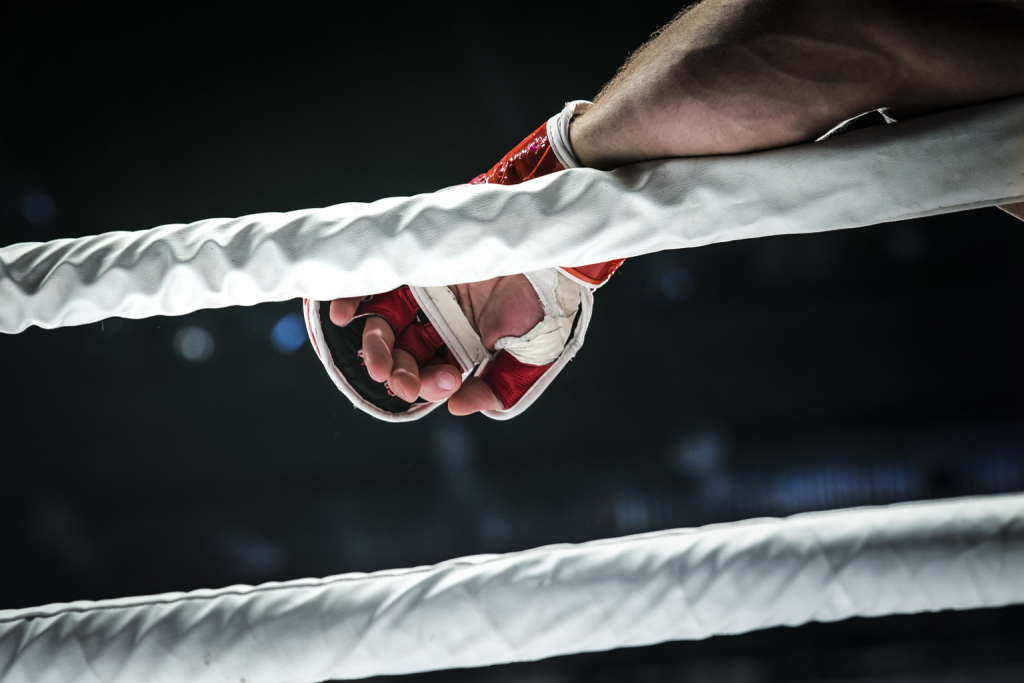As UFC Fight Night 117 in Japan approaches on September 23, 2017, featuring one of the most exciting rematches in recent MMA history, we look at how the sport’s popularity has risen globally while declining in Japan – and the new local star who could help turn things around at home.
It’s been two years since current no. 7 ranking light heavyweight Ovince Saint Preux met no. 6 ranking Mauricio “Shogun” Rua inside the cage on the latter’s home turf in Brazil. Despite being a last-minute replacement as Shogun’s opponent and having almost a decade less fight experience than the Brazilian, Saint Preux stunned the masses when he knocked out Shogun, ending the match in just 34 seconds to take the win.
This month, on September 23, the two are set to face off again as UFC holds its fifth live event in Japan at Saitama Super Arena. Fans of the sport are itching to find out: was Saint Preux’s unexpected knockout a stroke of luck? Will he be able to endure a fight that might go five rounds? Looking ahead to the rematch, the fighter tells Weekender: “I’m going to take it how I can take it. If it goes all five rounds, I’m prepared to go all five rounds, if I can do it in 34 seconds again, or even shorter than that, then I’ll take that too.”

UFC 197: Saint Preux vs. Jones. Photo: Getty/Zuffa LLC

UFC 198: Shogun (right) vs. Anderson. Photo: Getty/Zuffa LLC
This is the kind of unpredictable excitement that captivates both fans’ and fighters’ passion for MMA (mixed martial arts) – compelling, real fights where anything can happen.
A precursor to modern MMA was the vale tudo (“anything goes”) tournaments in Brazil where fighters from different backgrounds and disciplines would compete against each other in full contact combat with few rules or regulations. Since the 1960s the legendary Gracie family has been at the center of the scene, setting out to prove that Brazilian jiu-jitsu was the strongest and most effective style of fighting, later bringing vale tudo to the US and Japan.
“The infamous 1976 “wrestler vs. boxer” fight between Antonio Inoki and Muhammad Ali may have been a disaster in terms of execution, but the audience’s fascination was undeniable”
Japan itself has a unique and significant history of martial arts – a long lineage holding the origins of karate, judo and Japanese jiu-jitsu – but it’s in pro wrestling that Japanese MMA has its earliest roots. The infamous 1976 “wrestler vs. boxer” fight between Antonio Inoki and Muhammad Ali may have been a disaster in terms of execution, but the audience’s fascination was undeniable. A combination of hard hitting “strong style” matches and many of the wrestlers’ martial arts backgrounds made the perfect breeding ground for crossovers and offshoots to develop.
The 90s and early 2000s saw now defunct Japanese promotion companies such as Pancrase, Shooto and Pride evolving rapidly, gaining attention from abroad, and at their peak even garnering national television coverage for annual sold out events on New Year’s Eve. A Japanese icon emerged in the form of Kazushi Sakuraba whose impressive overseas victories included wins over several members of the prestigious Gracie clan, giving fans a hero to champion on an international level.
In the early 1990s the term “mixed martial arts” was widely adopted, and cemented by the foundation of the Ultimate Fighting Championship (UFC) in 1993. While the Japanese scene had been flourishing, MMA’s early development in the States was plagued by criticism of its overt violence, struggles with regulations, legal difficulties and broadcasting issues, which stagnated the growth of the industry and sent many of their athletes overseas.
On the brink of bankruptcy, UFC was sold to Zuffa LLC in 2001 for $2 million. Through increased advertising, media deals and a focus on global expansion, slowly and steadily the company built up its reputation. New safety measures were enforced, pay per view events increased, and each year they advanced into new territories, buying out smaller, struggling promotions and developing an increasingly diverse roster of talent as fan numbers snowballed. Sixteen years later the company is valued at $4.2 billion, and the name UFC has become synonymous with MMA everywhere.
Meanwhile, Japanese companies began to lose their top fighters to Western promotions and struggled to keep hold of fans’ attention as a string of scandals and closures around the mid-2000s caused the popularity of the sport in Japan to decline. An aging Sakuraba could no longer match his former victories, fans’ attention shifted to other sports, and MMA in Japan slipped back almost entirely underground. In a country where there was once such a wealth of home grown interest, can the sport ever return to its former glory days, and if so, will UFC have any significant part to play in its revival?
The Future Face of MMA in Japan
Just a few months after Sakuraba was honored with an induction into the UFC Hall of Fame (in July 2017), the upcoming card features a lineup of some of Asia’s top fighters alongside a handful of fresh newcomers. The chance for a rising star with potential to be the future face of MMA in Japan is epitomized in 20-year-old flyweight Naoki Inoue and his impressive 11-0 MMA record (11 wins, 0 losses). Inoue made his UFC debut in Singapore earlier this year, defeating fellow newcomer Carls John de Tomas. This month he takes on the Philippines’ Jenel Lausa with a home crowd cheering for him as he hopes to maintain his flawless record.

Naoki Inoue at a UFC Fight Night Japan press conference
Inoue is understandably excited to be fighting at the Super Arena, a venue where so many legendary MMA events have been held. “I’ve never actually been there before, but I can tell from watching on TV that it’s really big, so of course I’m very nervous,” he tells Weekender. The UFC has yet to have an Asian champion, but Inoue isn’t thinking too much about the mounting pressure on his shoulders. “It would be great if I can keep winning, and if that results in more Japanese people watching me and more Japanese fans, then of course that would be the best for me … I’ve decided I’m going to stick with MMA my whole life; I don’t know what will happen, but I’m just going to keep doing my best.”
UFC Vice President of Asia Pacific Kevin Chang is well aware of the necessity to showcase “homegrown heroes” at their events in Japan. “The fans in Japan are very sophisticated … we have a fan base that knows what good MMA is, and what other fake combat sports are; they know the difference between those things and they know who the stars are,” he says. “They know that all the best fighters in the world compete in the UFC … this is as real as it gets. It’s encouraging that we feel like we have [Japanese] athletes with the potential to rise to the top here too.”
Whether or not Japan’s fascination with MMA can be rebuilt still remains to be seen, but there is little doubt that UFC’s brand will continue to expand and evolve in the coming years. “We are fortunate to have been the pioneers in the sport – it was UFC who established all the rules, established the weight classes, [and] established the way it’s judged and scored,” says Chang. “Of course we can’t lose the authenticity of this being MMA, to be able to incorporate all the different disciplines and to give no discipline a particular advantage; those things are going to be cemented, but the safety of our athletes is paramount so we’re also always working on ways to make this competition safer as we go forward.”
UFC’s global domination doesn’t seem to be under threat, and an enduring appetite for MMA has shown this is a sport that transcends all cultural boundaries and unites billions of avid fans across the world.
Ovince Saint Preux sums it up: “The opportunity for mixed martial arts and UFC itself is endless; everybody loves to watch it. Mixed martial arts is like ‘you put your best fighter versus my best fighter, and let’s see who’s going to win.’ You’ve had that stuff going on since the gladiator days … it’s a natural human instinct.”
UFC Fight Night Japan: Shogun vs. Saint Preux will be held on September 23, 2017 at Saitama Super Arena. For more information and to purchase tickets, click here.









